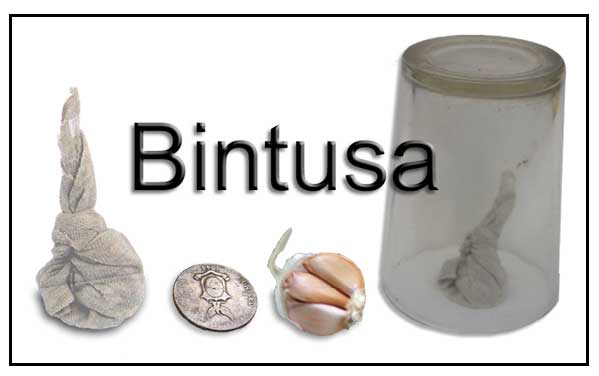
M I S C E L L A N E O U S T H E R A P I E S



|
Bintusa is a form of massage therapy used for a variety of musculoligamentous complaints (back pain and muscle strains) or muscle fasciculations and tremors that is often attributed to "too much air" or "bad air" (masamang hangin).
In lieu of the cellophane strip, strips taken from banana leaves or other medicinal plants may be used. A broad-base cloth wick. usually with a coin serving as base, is saturated with fresh coconut oil, made to stand on the skin and then lit up. A drinking glass is placed upside-down over this lighted wick and pressed firmly onto the skin. As the light extinguishes, a vacuum is produced, the skin and soft tissues inside the glass are drawn upward. The glass is then slid over the involved area producing a cooling and massaging effect. Sometimes the sliding of the glass over the affected area is intolerably painful. In this case, the glass is removed and placed anew on another area. The juice of a fresh garlic clove is applied over the area just massaged to seal the skin and prevent outside air from entering the pores with its unpleasant consequences. The patient is advised not to bathe for 24 hours. The procedure is repeated daily, as often as needed. |

| Bintusa | Pagtutuli (Circumcision) |
| Bulong and Orasyon | Pwe-Usog, Pwe-buyag |
| Cadot | Suob |
| Kudlit | Tapal |
| Lunas | Tawak |
| Luop | Tawas |
| Magasawang Gamot | Other Anecdotal Therapies |
 |